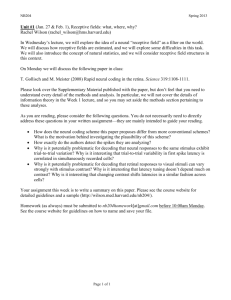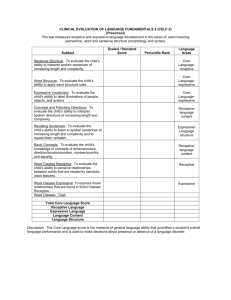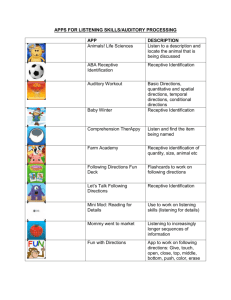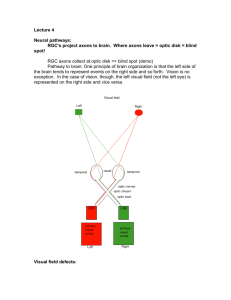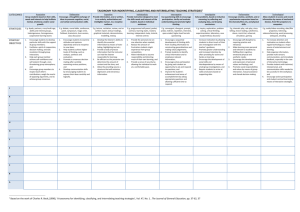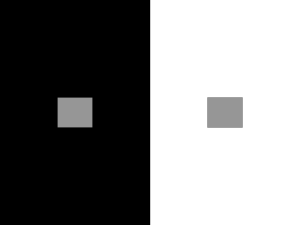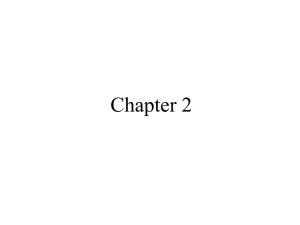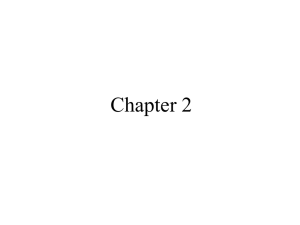Synopsis Day 3: Sensation and Perception
advertisement
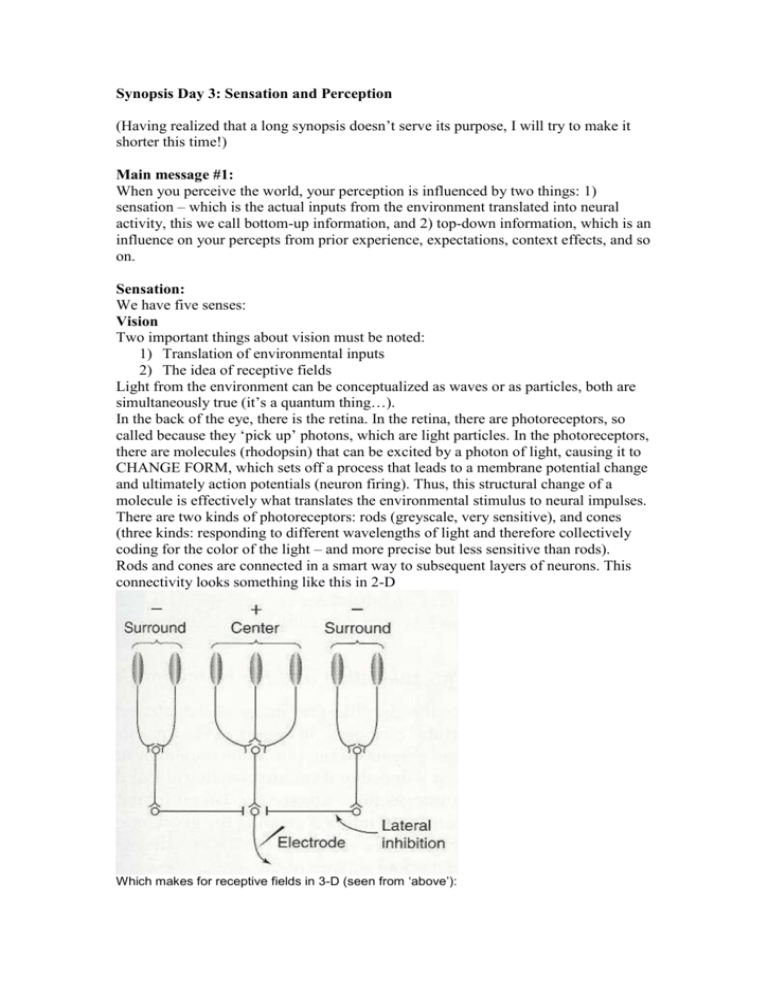
Synopsis Day 3: Sensation and Perception (Having realized that a long synopsis doesn’t serve its purpose, I will try to make it shorter this time!) Main message #1: When you perceive the world, your perception is influenced by two things: 1) sensation – which is the actual inputs from the environment translated into neural activity, this we call bottom-up information, and 2) top-down information, which is an influence on your percepts from prior experience, expectations, context effects, and so on. Sensation: We have five senses: Vision Two important things about vision must be noted: 1) Translation of environmental inputs 2) The idea of receptive fields Light from the environment can be conceptualized as waves or as particles, both are simultaneously true (it’s a quantum thing…). In the back of the eye, there is the retina. In the retina, there are photoreceptors, so called because they ‘pick up’ photons, which are light particles. In the photoreceptors, there are molecules (rhodopsin) that can be excited by a photon of light, causing it to CHANGE FORM, which sets off a process that leads to a membrane potential change and ultimately action potentials (neuron firing). Thus, this structural change of a molecule is effectively what translates the environmental stimulus to neural impulses. There are two kinds of photoreceptors: rods (greyscale, very sensitive), and cones (three kinds: responding to different wavelengths of light and therefore collectively coding for the color of the light – and more precise but less sensitive than rods). Rods and cones are connected in a smart way to subsequent layers of neurons. This connectivity looks something like this in 2-D Which makes for receptive fields in 3-D (seen from ‘above’): Each ‘ganglion cell’ in the retina has such a receptive field, which is a circular region of space (visual space) that it responds to. It responds with more activity when the center (inner) circle is stimulated (by photons) and responds with less activity when the surround (outer circle) is stimulated. This mechanism of center-surround receptive fields explains the subjective ‘shadows’ in the crosspoints of the Hermann grid (see the hand-out image you received at the lecture). In summary: 1) light is transformed into neural signals by a special receptor changing form when ‘receiving’ a photon 2) receptive fields are a basic building block of the visual world, and by hooking them up to each other and in different constellations to next neurons you get increasingly complex ‘receptive fields’ for these higher-order neurons (such as a row of circular receptive fields hooked up to one higher-order neuron – which then becomes receptive to a rectangular stimulation across these receptive fields). Touch The idea of receptive fields applies the same way to touch: you have receptive fields on the skin, with receptors for light pressure, heavy pressure, stretch, and so on. The idea of increasingly complex hierarchical ‘detectors’ is the same as in the visual system. Smell/taste Just as a photoreceptor undergoes a structural change when a photon is absorbed, particular neurons have receptors just inside your nose that can bind to particular molecules (that smell). This binding against leads to a structural change, which sets again in motion a cascade of intracellular events that eventually leads to a membrane potential change (and possibly action potentials). Hearing The ear is amazing: the outer ear (pinna) bounces air pressure waves (that is sound, after all), inside the ear canal. There they make the ear drum vibrate. This vibration is passed on by tiny bones, until it vibrates the fluid inside the snail-formed cochlea. Inside this cochlea, the vibration carries, and makes the basilar membrane resonate (vibrate along) at a particular point in the cochlea – depending the frequency of the vibrations. Tiny hair cells at this point of the cochlea brush against a ‘roof’ because of the vibration, which translates into neural signals. AMAZING!!!!!!!! Break The main things to take away from the sensation story before the break were: 1) the five senses each in their own way translate environmental inputs into neural signals. This is done in fantastically interesting ways, cleverly evolved over the ages. In most cases, environmental signals cause a structural change of specialized sensory receptors, and this structural change sets off a cascade of complex events leading to a neural signal. 2) The sensory world is organized, in receptive fields for vision and touch, in frequencies for hearing. Aside from these bottom-up influences on perception, our final percept, that which we actually see, hear, and so on, is also affected by top-down signals. These depend on your prior knowledge of the world, mind set, context, expectations, and so on. Just youtube ‘illusions’ or google-image ‘visual illusions’ and you can take a ride down illusory lane. These often tell us about things in the world that we learn without realizing it (such as the effect of corners and angles on our everyday perception). Sometimes the brain can make us see things that aren’t there, in the case of the kanisza triangle This is usually a good thing: most of the time in every day life, stimuli are not perfectly clear, so it’s convenient that the brain makes sense of the inputs, finishing the percepts even if the stimulation isn’t complete. It does that in the case of the image above: most of the time, when we see clear triangular corners (such as in the pacmans), and they align, there will be a triangle. Here, the triangle is unfinished, but based on that general regularity that most often does apply, the brain finished the triangle for you. Similarly in this example: we know from every day life that things in shadow are in fact lighter than they appear. In the image here, the cylinder throws a shadow over square B. So our brain ‘corrects’: it’s making the square appear lighter than it actually is, based on the knowledge that it is only dark because it’s in shadow. Sometimes, the brain doesn’t see things that ARE there. Such as below: Perhaps the clearest evidence that our perception is shaped by top-down signals is this: you probably didnt see all the faces in this image when you first saw it. Now, having found some before, you should see many faces immediately. I bet that in a year or two, you will STILL see more faces than when you first saw it.
